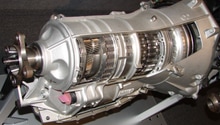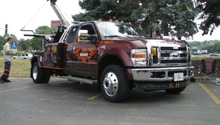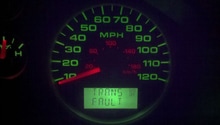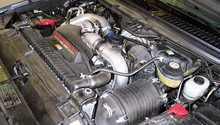Ford F-250: Why is My Transmission Slipping?
A "slipping" transmission in your F-250 Super Duty is often a sign that a small problem is about to turn into a larger one. Our guide will help you figure out what exactly is failing so you don't have to throw money at what could, potentially, be an easy fix.
This article applies to the F-250, F-350 Super Duty (2005-2014).
A slipping transmission is never a good sign. It's something you'll want to diagnose and fix as soon as possible before a small problem ruins your F-150 or F-250. If your truck feels like its slipping, you'll want to limit driving to a bare minimum to prevent any additional damage. A slipping transmission is usually characterized by a change in RPM without a change in speed. You'll notice it when you go to accelerate but you don't actually speed up. A "slip" is when RPMs climb followed by a clunking sound and a jerking sensation when the transmission finally engages. The key to differentiate this from a misfire would definitely be the clunking sound.
Step 1 - Pull Diagnostic Trouble Codes and Check Technical Service Bulletins
If you already have a trouble code scanner all you'll need to do is plug it into the OBD-II port which is usually located under the driver side part of the dash. Once it's plugged in, scan and record and DTC codes found. If you don't have a code scanner and you don't want to purchase one, your local auto parts store will normally pull the codes for free as well. Once you have the trouble codes, a quick Google search or phone call to your dealership will be able to give you a lot more information on what they mean.

In addition to pulling the codes, you should also check to see if there is any current Technical Service Bulletins (TSBs) out for your truck that haven't been fixed yet. TSBs are a way for Ford to release a known problem and allow you to come back to the dealership to have it fixed for free.
Related: Search Safety Issues and TSBs - NHTSA.com
Step 2 - Check Transmission Fluid
A common cause and luckily the cheapest to fix is low or dirty transmission fluid. To check the fluid level properly, the transmission will need to be fully warmed up. This means on top of the engine being warmed, you additionally need to go for a short drive or let it idle additional type while cycling gears as the transmission takes longer to fully warm up.
If the fluid is low you'll need to top it off, not only can low fluid cause the slipping but it can also lead to a lot of other problems as well. In addition, transmission fluid doesn't naturally burn off like engine oil so you'll want to be on the lookout for a leak as well. Fluid too high doesn't normally cause slipping, however you'll still need to drain some out as it can lead to other problems.
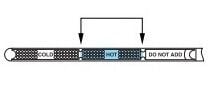
Figure 2. Your transmission fluid should be in this range when warm (approx 150°F to 170°F) 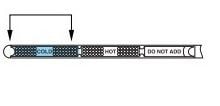
Figure 3. Your transmission fluid should be in this range when cold.
Old, dirty fluid can also cause the transmission to slip. Clean transmission fluid will be a nice shade of red, like a glass of fruit punch. If your fluid is brown or black and has a burnt smell too it, you'll want to have the fluid changed. If you're changing the fluid, it'd be a good idea to test if the problem is still there before spending more money to replace other parts. However, if your fluid is pink and foamy like a strawberry milkshake, you have water or engine coolant in your transmission fluid. This is usually a sign of internal damage which will require a full transmission rebuild. You might also want to change out your radiator if this is the case.
(Related: How to Check Your Transmission Fluid - Ford-Trucks.com)

Transmission Fluid Comparison
Step 3 - Check electrical connections
Like everything else on your truck, it's controlled or regulated by an electrical signal in some way. All of these issues should trigger a DTC code, however, the code for the solenoid can be indirectly caused by bad transmission fluid as the sensors are pretty picky. A solenoid that has completely failed will normally cause you to get stuck in a certain gear. This can cause a slipping sensation if they are failing intermittently. Codes for a bad solenoid can also be triggered by internal damage to the clutch packs.
This is pretty time intensive as there is a lot of wires that run from the transmission to other places. What you'll want to do is start at the transmission and work your way up to the engine bay following the wires checking for any cuts or chaffing. If you find any, that wire will need to be replaced. When in doubt, a multimeter can help tell you if a wire is good or bad.
Step 4 - Check line pressure
Similar to having low fluid, a clogged line will also starve the transmission for fluid which can cause it to slip. You'll need a transmission line pressure gauge with a hose extension long enough to reach up to the cab. You're going to need to be able to watch the transmission line pressure from the driver's seat with moving through gears. The transmission operates within certain pressure ranges for each gear position, so anything over the range would indicate something is clogged. Likewise, anything under the range would indicate a leak somewhere. Unfortunately, the clog may be internal which would mean the transmission would need to be broken down to fix it.
(Related: How to Check Transmission Line Pressure (Super Duty) - Ford-Trucks.com)

Step 5 - Check For Internal Damage
Unfortunately if you've made it to this step without finding your problem, you most likely have internal damage to the clutch packs. One way to check is to pull the transmission pan and look for metal shavings. Anything over fine dust size definitely means there is damage somewhere. When these get damaged, they won't be able to engage or disengage properly. To diagnose this you'll need to pull the transmission and open it up. This is a pretty involved job and something I definitely don't recommend for the first timer. Yes, having a shop do this won't be cheap, but it's better than accidentally damaging something permanently where you end up having to buy a new transmission all together.
Featured Video
Related Discussion
- Delayed Gear Engagement Breakdown - F150forum.com
- How to Check Transmission Fluid - Youtube.com
- Shift Solenoid Failure Causes Missing, Slipping Shifts - Ford-Trucks.com
- Range Sensor, Shift Solenoid Causing Bad Shifts - Ford-Trucks.com
- Torqshift Transmission Information Bible - Ford-Trucks.com

